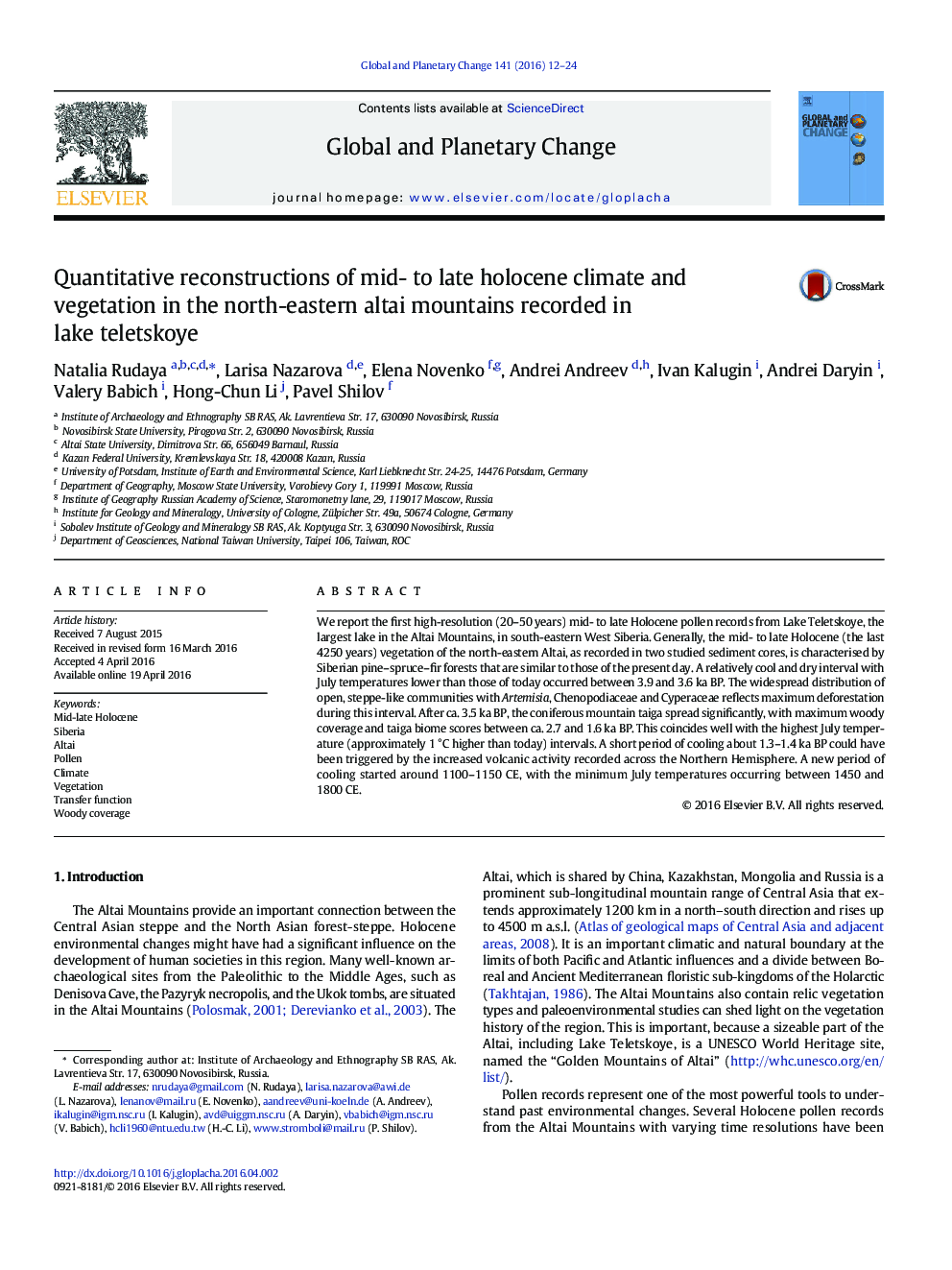| Article ID | Journal | Published Year | Pages | File Type |
|---|---|---|---|---|
| 4463315 | Global and Planetary Change | 2016 | 13 Pages |
•Pollen records from NE Altai reveal climate and vegetation changes during the last 4250 years.•Increasing July temperatures correlate with taiga expansion in NE Altai•A trend to cooling started at 1100–1150 CE, with minimum July temperatures between 1450 and 1800 CE.
We report the first high-resolution (20–50 years) mid- to late Holocene pollen records from Lake Teletskoye, the largest lake in the Altai Mountains, in south-eastern West Siberia. Generally, the mid- to late Holocene (the last 4250 years) vegetation of the north-eastern Altai, as recorded in two studied sediment cores, is characterised by Siberian pine–spruce–fir forests that are similar to those of the present day. A relatively cool and dry interval with July temperatures lower than those of today occurred between 3.9 and 3.6 ka BP. The widespread distribution of open, steppe-like communities with Artemisia, Chenopodiaceae and Cyperaceae reflects maximum deforestation during this interval. After ca. 3.5 ka BP, the coniferous mountain taiga spread significantly, with maximum woody coverage and taiga biome scores between ca. 2.7 and 1.6 ka BP. This coincides well with the highest July temperature (approximately 1 °C higher than today) intervals. A short period of cooling about 1.3–1.4 ka BP could have been triggered by the increased volcanic activity recorded across the Northern Hemisphere. A new period of cooling started around 1100–1150 CE, with the minimum July temperatures occurring between 1450 and 1800 CE.
